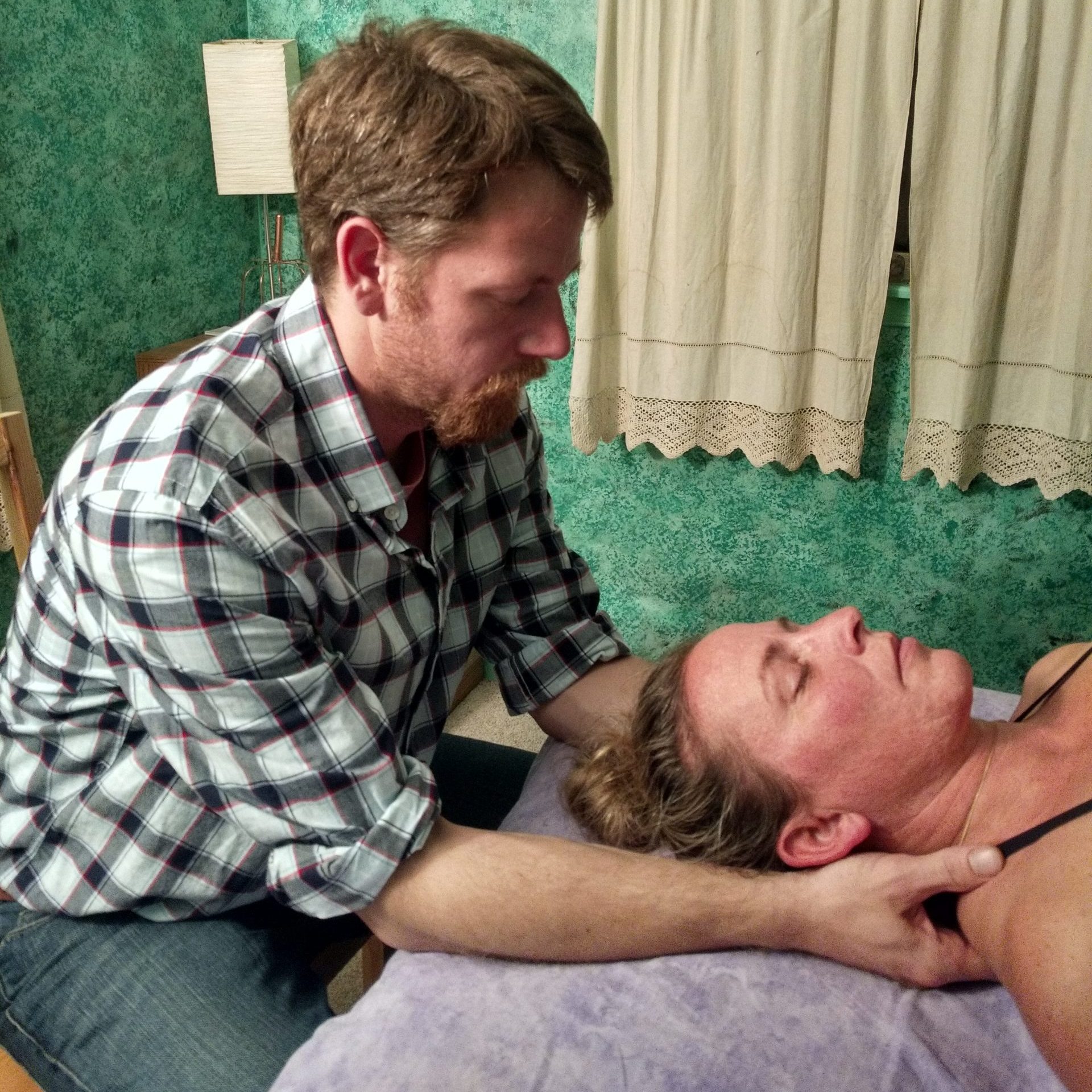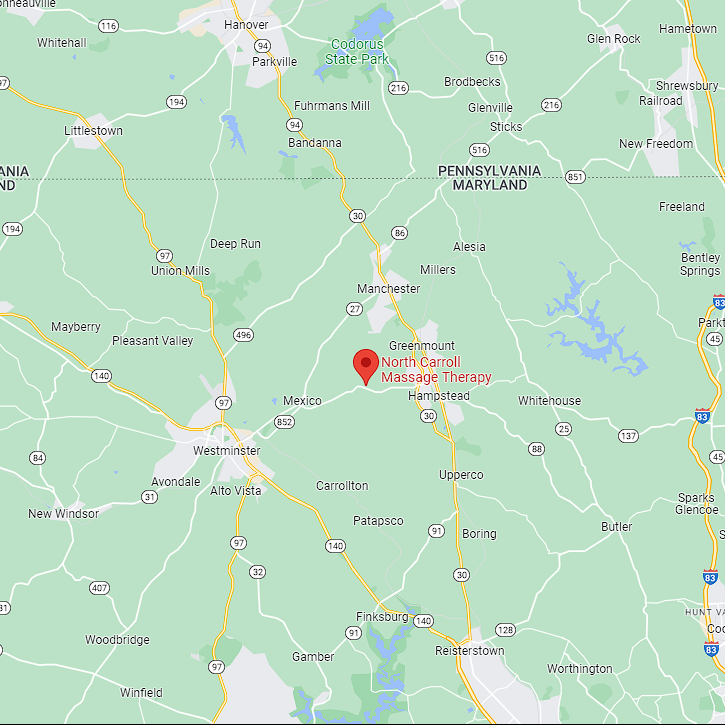Find Your Best Rolfing®
Rolfing for your dynamic being.
FREE
CONSULTS
Discover how Rolfing can fit into your life.
TRADITIONAL
ROLFING
Hands on Structural Integration
MOVEMENT
EDUCATION
Improved Efficiency, Embodiment & Quality of Living
Gabriel Ewing is a Board Certified practitioner of Rolfing Structural Integration™.
ABOUT GABRIEL
 Gabriel Ewing is a Rolfer® certified by the Rolf
Institute of Structural Integration, and licensed by
the Maryland Board of Massage Therapy and
Chiropractic Examiners.
Gabriel Ewing is a Rolfer® certified by the Rolf
Institute of Structural Integration, and licensed by
the Maryland Board of Massage Therapy and
Chiropractic Examiners.
As a client of Rolfing,
the work had a profound effect on lingering
injuries, trauma, physical limitations, and
improved his over all quality of life.
After eight
years as a Rolfer, Gabriel continues to strive to bring
positive change for his clients with a focus on
body and mind centered healing and education.
Contact Information:
PH: 443-683-1300
Email: gabriel.ewing15@gmail.com.
“The approach of dealing with the whole person, and Rolfing’s focus on empowering the client to orient and move
differently in the world as they relate more fully to their body is what I finds most amazing about the
work.” - Gabriel
HOW IT WORKS
Rolfing Structural Integration works by differentiating superficial and deep investing fascia layers creating space for improved range of motion & removing adhesions between layers of connective tissues.

By addressing structural limitations and physical traumas locked in the body, Rolfing allows for improved range of motion and re-balances & re-tunes the body in relation to gravity.

The client begins to move with more efficiency, freedom & adaptability. Improvements are maintained through movement education and occasional tuneups following initial sessions.

Chronic symptoms are reduced, quality of living improves & clients get to live in a body supported by gravity, not aggressed by it. Click below to learn more.
He is fully licensed by the Maryland State Board of Chiropractic and Massage Therapy Examiners.
 The Ten Series:
The Ten Series:
The ten series is a specific series of ten Rolfing® sessions designed to address the fascia of the whole body.
During each session your Rolfer will work on specific structures of the body utilizing the core principals of Rolfing with the goal of bringing greater integration and order to the body as a whole.
Sessions 1-3:
 The first three sessions are designed to work on the superficial fascia of the body to create greater access to deeper structures and tissue layers of the body.
The first three sessions are designed to work on the superficial fascia of the body to create greater access to deeper structures and tissue layers of the body.
Session 1: Free The Breath- Organization of the shoulder girdle and arms, reduces their impact on our breath and allows for the breath to expand in all directions.
Session 2: The Foot- Addressing the way that we come into contact with the ground, and move though our foot dramatically impacts how all other motion through space occurs. Our feet are our root in gravity, by balancing and enhancing our contact with the ground we set the litteral foundation for futrue change to arise in your system.
Session 3: The Side-Line- Paramount in laying the foundation for a higher organization of our physiological structure, we will work in this session on giving your system a defined “front” and “back” and “sides,” and continue to define the boundaries of your structure, and alignment. Defining the superficial fascia as distinct from deeper levels of tissue, and continuing to define the structural line we will focus on the relationship of the hip and shoulder girdles to one another.
Sessions 4-7:
Sessions four through seven will focus on the deeper layers of fascia and are designed to address the postural structures and how the body supports itself in motion.
 Session 4: The Mid-Line- This session begins the organization of specific structures to one another, and the freeing of organizational patterns that limit our freedom to move in space. Specifically we will we address how the foot, relates to the knee, and how that in turn impacts the organization of our hips and our capacity to find deeper support in our structure as it encounters movement and stability in space.
Session 4: The Mid-Line- This session begins the organization of specific structures to one another, and the freeing of organizational patterns that limit our freedom to move in space. Specifically we will we address how the foot, relates to the knee, and how that in turn impacts the organization of our hips and our capacity to find deeper support in our structure as it encounters movement and stability in space.
Session 5: The Front Line- This session gives us an opportunity to shift the way in which we take the world head on, we will look at the way in which we lean into or back from the world around us, how we are able to find core stability, access the movement initiation of the psoas, and the depth of support the balanced and resonant diaphragms of the body provides.
Session 6: The Back Line/Free the Sacrum- With a more fully supported and organized system, the back and spine are finally in an optimal position to find freedom to let go, and become the adaptable, supportive, and dynamic structure it needs to be in order to operate as the nervous system’s highway. As well, we will look at the cornerstone of the spine, the sacrum, and stabilize its function as both the base of the spine, and “hinge joint” that allows for the hips to move freely in supporting our motion.
Session 7: The Head- As the CPU of the body it is only fitting that we spend an entire session here. Make sure that the head is on top of it all as it should be, able to take on, and take in, what is happening around us to the greatest extent possible. We will work through the deep structures of the neck, jaw, head, and face; establishing balance, resonance, ease, and freedom through the cervical spine.
 Sessions 8-10:
Sessions 8-10:
The final three sessions of the ten series are about integrating the body and its various parts into a higher state of organization and coordination.
Session 8 & 9: “Re-integrations”- These sessions work in a complementary way, giving us the opportunity to revisit any of the areas that may need a little extra attention, or that feel like they may have more that is needed to reach optimal integration with you system as a whole.
Session 10: This completes the ten series, and gives the opportunity for you to explore any unfinished work that may need to have addressed in you structural integration process. It is a final sweep of sorts that will leave you the client ready to walk out of your session into the world in a now more integrated and whole being way.
What is Rolfing?
Rolfing Structural Integration® addresses structural inhibitions and limitations by working directly on the connective tissue (fascia) of the body, combined with movement education to help the client to interact efficiently with the field of gravity.
 In this way, Rolfing strives to create dynamic change in a client’s entire system. Gabriel’s holistic approach means that every session will be uniquely designed to address your needs as a client.
In this way, Rolfing strives to create dynamic change in a client’s entire system. Gabriel’s holistic approach means that every session will be uniquely designed to address your needs as a client.
Clients who receive Rolfing can expect:
An improved sense of ease in your body.
Better awareness of how various structures of your body relate to one another in gravity.
Differentiation of the soft tissue.
Improved range and efficiency of movement
Adaptability in the felt sense of your body.
A greater sense of support and stability from the core.
What will my sessions be like?
A client receiving Rolfing can expect benefits from their very first session. You will sit down with your Rolfer and do an intake, followed by a general assessment of the injury, trauma, or discomfort, and movement limitations that brought you in.
Your practitioner will work to understand what patterns of movement, fascial restrictions, and structural limitations are contributing to your issue by passively or actively engaging the client in movement and palpation.
Gabriel will then work using hands, elbows, palms, and fingers on the restrictions in the soft tissues that contribute to your condition.
During the session, your practitioner may have you engage certain body parts or make movements to aid in the work, and to asses how the body may have adapted.
to aid in the work, and to asses how the body may have adapted.
What is Fascia?
Simply, Fascia is the primary support structure of the body’s soft tissues.
It is what forms the foundation of muscles, ligaments, and tendons, as well as the various compartments which contain our organs, and is continuous throughout the body.
Why work on the fascia?
By working on the fascia, Gabriel is able to help the create space within the body’s connective tissues.
Thereby allowing for the underlying structure(s) to find more freedom to move and function appropriately.
Essentially, Structural Integration brings a higher order and organization into the overall system of the individual!





 The Ten Series:
The Ten Series:  Sessions 8-10:
Sessions 8-10:


